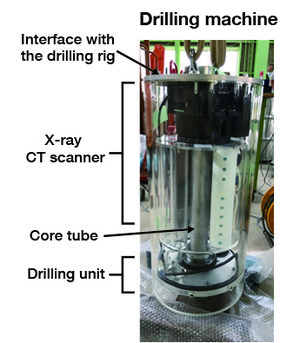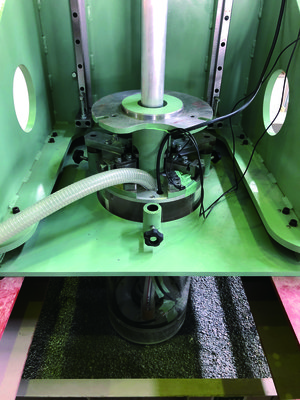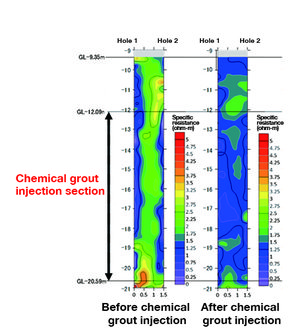Major Research 2C Research on Effective Use of Existing Infrastructure Facilities
Background and Objectives
There is strong demand to improve the functions of existing infrastructure and use them effectively as possible. Requests include measures to handle increasing cargo volume and larger ships and vessels, diversification of airport functions, and countermeasures to deal with existing facilities which can no longer be used due to increased external forces and other reasons. In addition, regarding waste disposal sites at ports which accept industrial and non-industrial waste, there is social demand for the highly effective use of them. On the other hand, it has become difficult to secure disposal sites which accept soil dredged from water channels for shipping routes. Accordingly, it is necessary to prolong the life of soil disposal sites.
Therefore, we will develop the following: techniques to improve the functions of existing infrastructure and to renew and efficiently change the intended use of existing infrastructure; techniques to reduce or effectively utilize construction byproducts; and techniques to effectively utilize waste disposal sites at ports.
Research Topics
Research and development were conducted on the following subthemes for efficient facility renewal, effective use of construction byproduct soil, utilization of waste disposal sites at sea, etc.
- Research on techniques to improve or renew existing facilities
To elucidate the fracture process of pier structures and improve our ability to better define the performance requirements of piers, we conducted model experiments to observe how the joint sections of pier superstructures and steel piles failed, and also used the data acquired from the previous year's model experiments to observe their fracture mechanism based on numerical analysis. We also worked on developing a method of evaluating the quality of improved ground through geophysical surveys, and examined how it could accurately perform detection based on specific resistance differences in indoor experiments, etc.
- Research on effective use and techniques of treating construction byproducts
We started conducting basic research to develop coreless ground survey methods. In addition, we started our study on the evaluation of how defects in solidified and improved soils would affect the overall strength of improved ground.
- Research on management and utilization of waste disposal sites at sea
Although we had previously halted our new research on this topic due to the lack of need to utilize those sites or to resolve related issues, we decided to keep gathering relevant information to explore such needs in the long term for fundamental research on the future site utilization.
Activities in FY 2020
Research on techniques to improve or renew existing facilities
Elucidation of the fracture process of pier structures to define the performance requirements of piers in more detail. While the performance requirements of piers can be broken down into different categories such as usability, repairability, and safety, the current performance specifications only cover the locations and amounts of residual displacement and plasticized hinges, etc. and fail to provide rules on their practical usability and repairability. To address such shortcomings, it is crucial to understand the fracture process of entire pier structures in detail, including the behavior of their components following yielding and plasticization. For this purpose, we conducted model experiments to observe the fracture process of the joint sections between pier superstructures and steel piles, and also use the data obtained from the previous year's model experiments on the underground bending behavior of steel piles to reproduce their fracture behavior based on numerical analysis.
Development of a method to evaluate the quality of improved ground through geophysical surveys.As no effective method currently exists to three-dimensionally observe the status of improved materials underground after chemical grout is injected into inhomogeneous ground to prevent liquefaction, we conducted a study to establish methods of evaluating the quality of improved ground and construction management based on geophysical surveys that would not require soil sampling. The study involved an indoor model experiment to measure the shape of improved ground in 3-D and also a real-scale measurement experiment to verify the method's applicability to coastal areas.
Research on effective use and techniques of treating construction byproducts
Basic research to develop coreless ground survey methods and establish digital geotechnical engineering. To develop an in-situ digital sampling method that is capable of scanning the core of the original underground soils with an X-ray CT scanner, we operated our internally developed drilling machine, which has a built-in X-ray CT scanner, on a gravel soil model and measured its excavation force, etc.
Evaluation of how defects in solidified and improved soils would affect the overall strength of improved ground. We performed numerical analysis to examine how weak sections would affect the stress-strain relationship of unconfined compression test, with the parameters being the strength ratio of weak and sound sections, weak section size, and the locations of the weak sections within the specimens. The analysis indicated that, if the solidified specimens contained some weak sections, the strain at failure would not increase, while exhibiting the same effects as crack-type disturbances that would only result in decreased strength. The analysis implied that such specimens, which exhibiting the same effects as crack-type disturbances, would not be suitable for the quality control of ground improvement such as cement-treatment. The improved ground with weak sections should be evaluated comprehensively, considering the content rate of the section.


Drilling machine with built-in X-ray CT scanner and drilling experiment
In addition, we examined a method of creating specimens containing weak sections. We were able to confirm that our goal of creating specimens containing unimproved sections could be achieved by placing a clay slurry that had been frozen with liquid nitrogen in a mold, pouring a slurry of cement-improved soil into the mold, and curing it.

Tomography of specific resistance measurement data before and after the chemical grout injection:image



